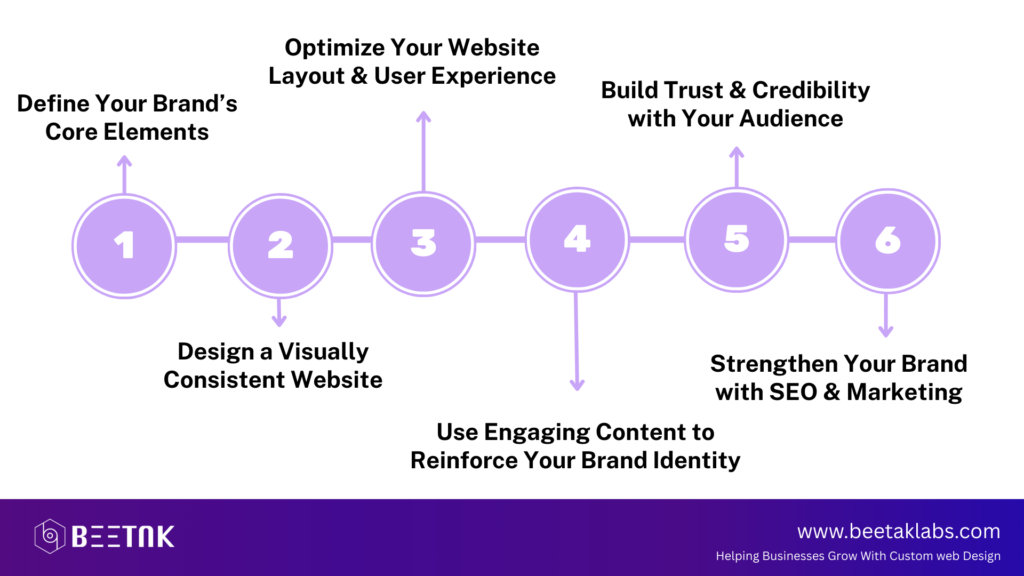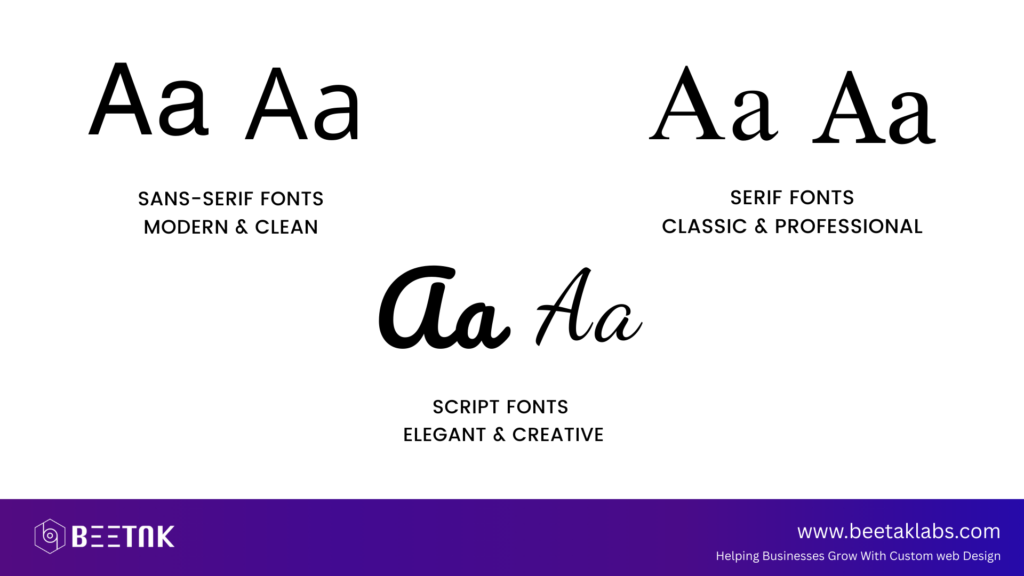Introduction
Your website is the digital face of your brand—it’s often the first impression potential customers have of your business. A well-crafted brand identity builds trust, recognition, and customer loyalty, setting you apart from competitors. But how do you establish a strong brand identity through your website?
This guide covers the key elements, strategies, and best practices to ensure your website reflects a consistent, compelling brand identity that resonates with your audience.
What is Brand Identity?
Your brand identity is more than just a logo; it’s the visual, emotional, and experiential representation of your business. It includes:
A well-defined brand identity creates a memorable experience and builds trust with your audience.
- Brand Name & Messaging – Your company’s voice, tone, and tagline.
- Logo & Visual Elements – Colors, fonts, imagery, and design style.
- User Experience (UX) & Website Layout – How visitors navigate and interact with your site.
- Content & Storytelling – The way you communicate your brand’s purpose and values.
A well-defined brand identity creates a memorable experience and builds trust with your audience.

Step 1: Define Your Brand’s Core Elements
Choose the Right E-Commerce Platform
Your choice of e-commerce platform will determine how smoothly your website runs. Here are the best platforms based on ease of use, customization, and scalability:
Before designing your website, establish the foundational aspects of your brand:
1. Understand Your Brand Values & Mission
Ask yourself:
- What problem does your brand solve?
- What emotions do you want customers to associate with your brand?
- What makes your brand different from competitors?
Example: Nike emphasizes empowerment and determination, reflected in its tagline, “Just Do It.”
2. Identify Your Target Audience
Knowing your audience helps craft a website that resonates with their needs, preferences, and pain points. Consider:
- Age, location, and demographics
- Buying behavior and interests
- What problems they want solved
3. Craft a Unique Brand Voice
Your brand voice should match your industry and audience.
- Friendly & Casual – Ideal for lifestyle brands (e.g., Glossier, Airbnb).
- Professional & Trustworthy – Best for finance, legal, or corporate websites.
- Bold & Adventurous – Works well for sports, fitness, and travel brands.
Step 2: Design a Visually Consistent Website
1. Create a Memorable Logo & Favicon
Your logo is the most recognizable part of your brand. Ensure it’s:
- Simple & Scalable (works on all screen sizes)
- Visually aligned with your brand’s personality
- Consistently placed (usually in the website header)
Example: Apple’s minimalist logo reflects its sleek, innovative brand identity.
2. Choose a Signature Color Palette
Colors evoke emotions and shape how people perceive your brand:
- Blue – Trust & professionalism (Facebook, PayPal)
- Red – Energy & urgency (Coca-Cola, YouTube)
- Green – Growth & sustainability (Whole Foods, Starbucks)
- Black & White – Luxury & sophistication (Chanel, Prada)
Tip: Use two to four colors that align with your brand’s personality and apply them consistently across your website.
3. Select the Right Typography
Your font choices impact readability and brand perception.
- Sans-serif fonts (e.g., Helvetica, Open Sans) – Modern & clean
- Serif fonts (e.g., Times New Roman, Georgia) – Classic & professional
- Script fonts (e.g., Pacifico, Dancing Script) – Elegant & creative

Example: Google uses clean, easy-to-read fonts to enhance accessibility.
Step 3: Optimize Your Website Layout & User Experience (UX)
1. Keep the Navigation Simple & Intuitive
A cluttered menu confuses visitors. Follow these best practices:
- Use a clear menu bar with 5-7 main categories.
- Place key pages in the header (Home, About, Services, Contact).
- Include a sticky navigation bar for easy scrolling.
2. Maintain Consistency Across Pages
- Header & Footer: Keep branding elements (logo, tagline, social links) consistent.
- Call-to-Actions (CTAs): Use uniform buttons (e.g., “Get Started,” “Shop Now”) with the same colors.
- Spacing & Alignment: Maintain structured layouts for a professional look.
3. Optimize for Mobile Users
With 60%+ of web traffic coming from mobile, ensure your website is:
- Mobile-responsive (adapts to all screen sizes)
- Fast-loading (aim for under 3 seconds)
- Thumb-friendly (easy to navigate on smartphones)
Example: Amazon’s mobile site is optimized for seamless shopping and fast loading times.
Step 4: Use Engaging Content to Reinforce Your Brand Identity
1. Tell Your Brand Story
A compelling About Us page builds trust by sharing your brand’s journey, values, and mission.
- Keep it authentic & relatable.
- Include behind-the-scenes photos or videos.
- Highlight customer success stories & testimonials.
2. Write in a Consistent Tone & Style
Ensure your content reflects your brand voice across:
- Blog posts & articles
- Product descriptions
- Email marketing & newsletters
Example: Patagonia uses storytelling to emphasize sustainability and environmental activism.
3. Use High-Quality Images & Visuals
- Professional photography enhances credibility.
- Consistent filter styles create brand cohesion.
- Branded graphics & icons reinforce identity.
Tip: Use free tools like Canva, Unsplash, and Pexels for high-quality visuals.
Step 5: Build Trust & Credibility with Your Audience
1. Display Social Proof
- Customer reviews & testimonials boost trust.
- Showcase media mentions & partnerships.
- Add user-generated content (UGC) from real customers.
2. Implement Secure & Transparent Policies
- Add SSL certification (padlock symbol in the browser).
- Include clear return & privacy policies.
- Provide multiple contact options (live chat, email, phone).
Step 6: Strengthen Your Brand with SEO & Marketing
1. Optimize for SEO
- Use targeted keywords in content and meta tags.
- Create SEO-friendly URLs (e.g., www.yoursite.com/brand-identity-tips).
- Add alt text to images for search visibility.
2. Leverage Social Media & Content Marketing
- Share blog posts, product launches, and customer stories.
- Use consistent branding across Instagram, LinkedIn, and Facebook.
- Run email marketing campaigns with your brand’s voice.
Final Thoughts: Build a Website That Strengthens Your Brand
Your website is your brand’s digital storefront, shaping how customers perceive, interact with, and trust your business. By focusing on consistent branding, high-quality design, engaging content, and strong SEO, you create a site that not only attracts visitors but also converts them into loyal customers.
Now is the time to elevate your brand identity through your website!



